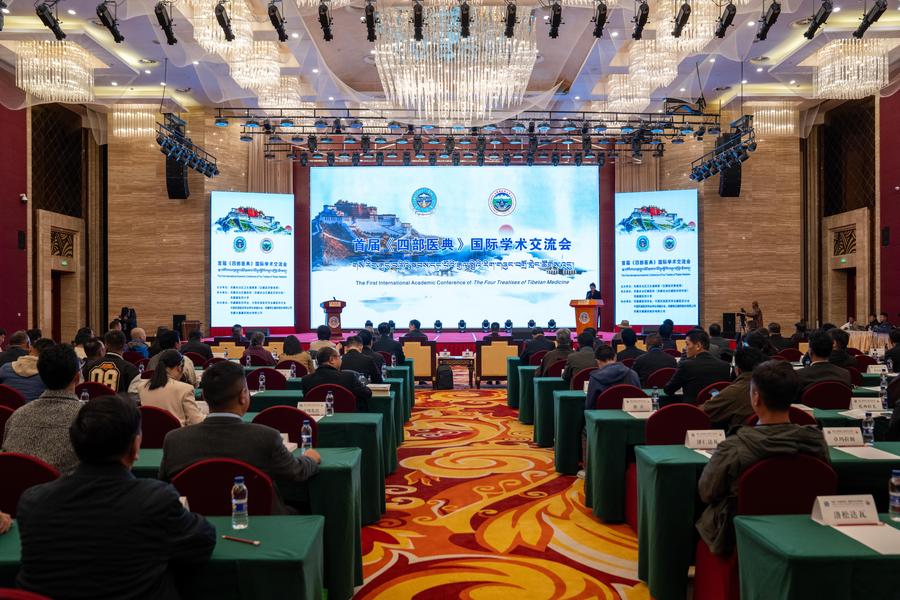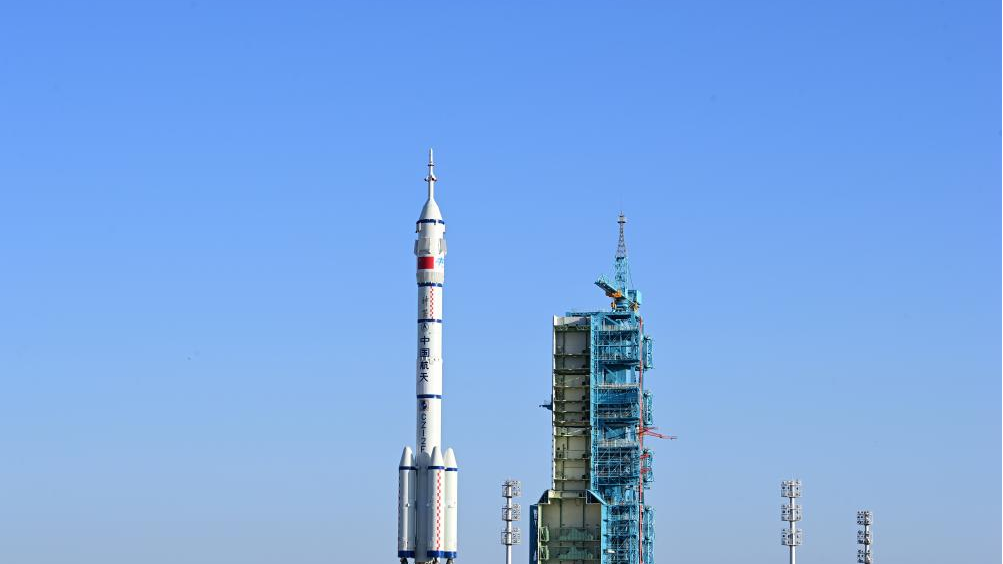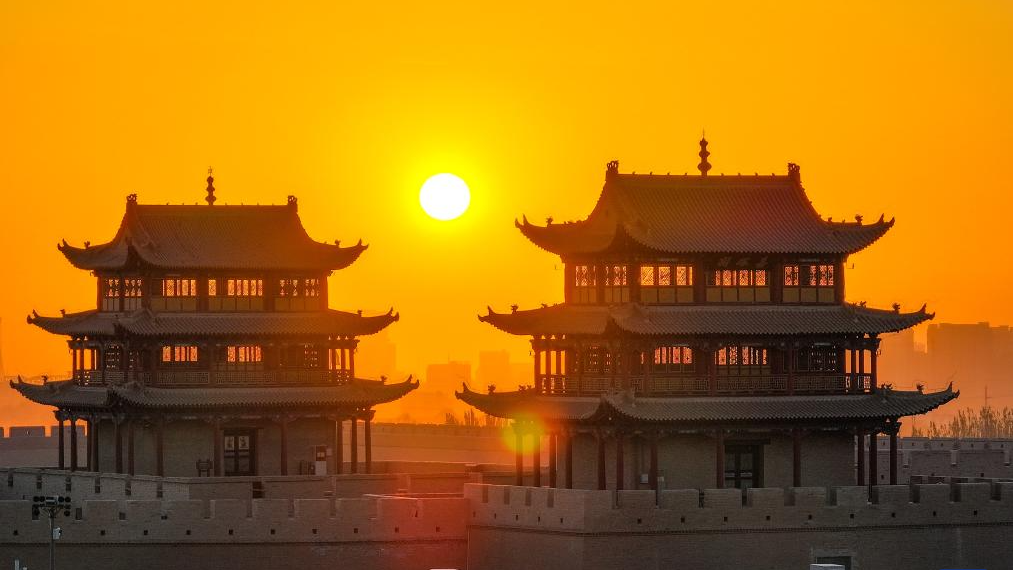Global experts hail China's commitment to preserving Tibetan medicine

This photo taken on Oct. 18, 2024 shows the first International Academic Conference of the "Four Treatises of Tibetan Medicine" in Lhasa, southwest China's Xizang Autonomous Region. (Xinhua/Tenzing Nima Qadhup)
LHASA, Oct. 23 (Xinhua) -- International experts have praised China's efforts to preserve and promote traditional Tibetan medicine.
Over 200 global experts and scholars from home and abroad recently gathered in Lhasa, the capital of southwest China's Xizang Autonomous Region, for an academic conference on "The Four Treatises of Tibetan Medicine," discussing the development and modern applications of these important medical texts.
Written between the 8th and 12th Centuries, "The Four Treatises of Tibetan Medicine" is the most influential foundational work on traditional Tibetan medicine. It shows fully the development and evolution of traditional Tibetan medicine, and has played an essential role in the dissemination and development of traditional Tibetan medicine in the Qinghai-Xizang Plateau, as well as the trans-Himalayan and Mongolian regions.
It not only represents the highest level of medical care in Xizang in ancient times, but also reflects the study of humanities, history, tradition, literature, art and craft in Xizang during an earlier period. The work was inscribed on the UNESCO Memory of the World Register in 2023.
John Vincent Bellezza, a senior research fellow at the University of Virginia, hailed the Chinese government's dedication to preserving the "The Four Treatises."
"They are doing a tremendous job in collecting thousands of ancient medical texts," he said. "Tibetan medicine is an ancient tradition that has been helping Tibetans and other people for many centuries. Now, in the 21st century, we have the opportunity to bring these traditions forward and try to improve and better understand the tradition to serve the people in the Himalaya and the plateau regions."
He also emphasized the importance of such a large-scale conference, saying, "This is crucial for the development of Tibetan medicine."
Ram Adhar Yadav, executive director of Nepal's National Ayurveda Research and Training Center, said the conference opened the door for academics, researchers and doctors to discuss how to research and treat diseases by using Tibetan medicine, traditional Chinese medicine, as well as Ayurveda, a traditional system of Indian medicine.
Amit Man Joshi, another researcher from the Nepali center, said the conference was a learning experience for him. "Before coming here, I didn't know much about the history of Tibetan medicine. This conference has broadened my knowledge so that I can go back to my country and share about Tibetan medicine."
The Chinese government has made significant strides in protecting and promoting Tibetan medicine in recent years.
In 2019, China invested 1 billion yuan (about 140.36 million U.S. dollars) in the construction of a new campus for the University of Tibetan Medicine, which has trained over 7,000 medicine professionals.
As of early 2022, Xizang hosted 49 public institutions of Tibetan medicine. The coverage rate of Tibetan medicine services in township health centers reached 94.4 percent, while that in village health clinics reached 42.4 percent.
Over the years, more than 300 ancient documents on Tibetan medicine have been collated and published, while more than 600 volumes of rare ancient books have been collected.
"The conference not only served to promote Tibetan medicine internationally, but also aimed to learn from and draw upon the development models of other traditional medical systems to further advance Tibetan medicine," said Tsering, director of the Hospital of Traditional Tibetan Medicine.
Last week, the hospital launched the country's first digital resource center for Tibetan medicine and astrology in Lhasa.
The center features 10 databases, including Tibetan medicine materials and the literature on Tibetan medicine and astrology. It also houses high-resolution scanned copies of rare Tibetan medical and astrology texts dating back to the 8th Century.
Joshi praised the establishment of the center, saying, "It's a great initiative. Creating a comprehensive database ensures that Tibetan medicine will be preserved for future generations."
Photos
Related Stories
- China's Xizang spends heavily on cultural tourism development
- Foreign teachers and students discover the real Xizang
- First Int'l Academic Conference of "Four Treatises of Tibetan Medicine" kicks off in Lhasa
- Winter tourism promotion adds to allure of China's Xizang
- Delicate thangka paintings in NW China's Qinghai
Copyright © 2024 People's Daily Online. All Rights Reserved.









